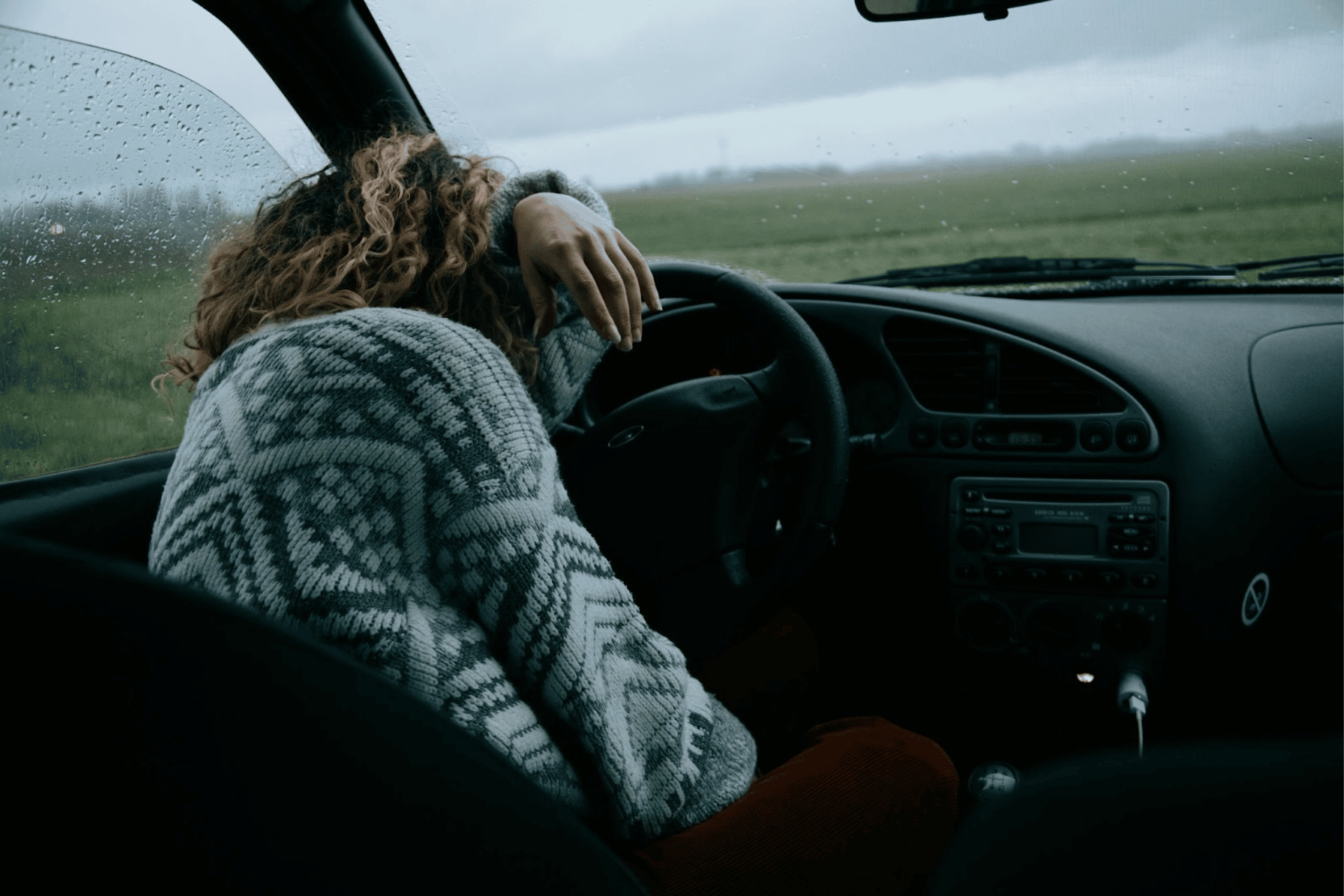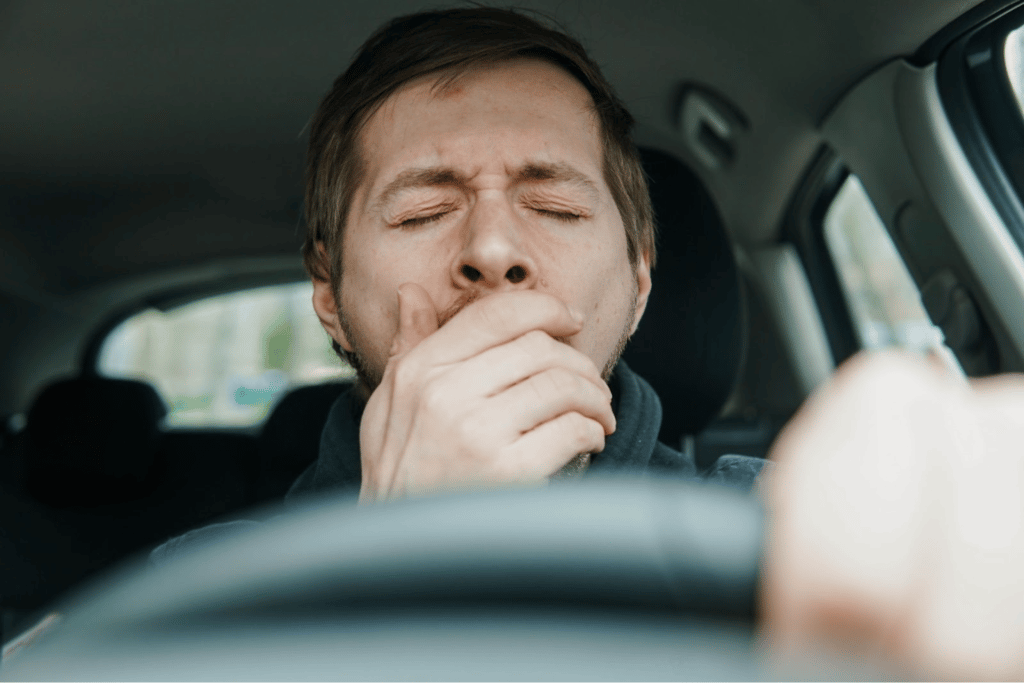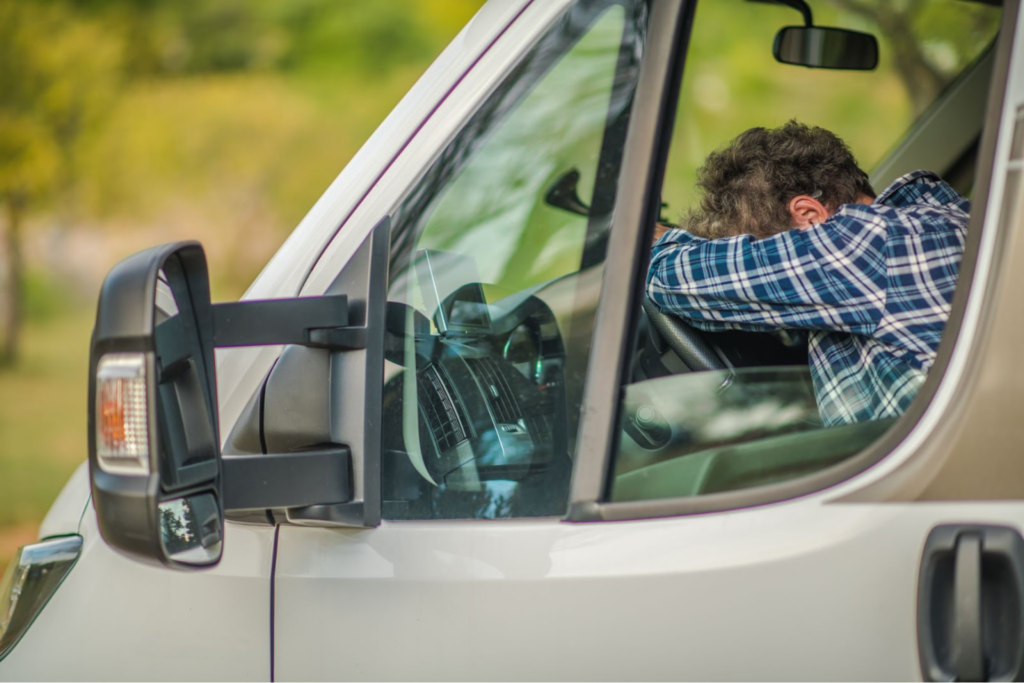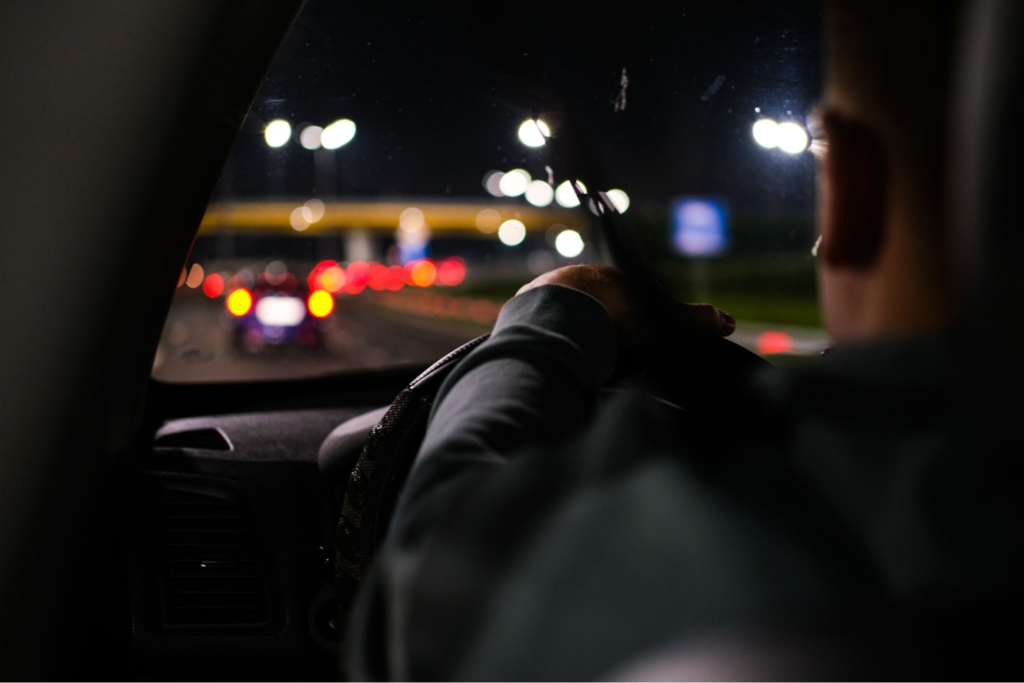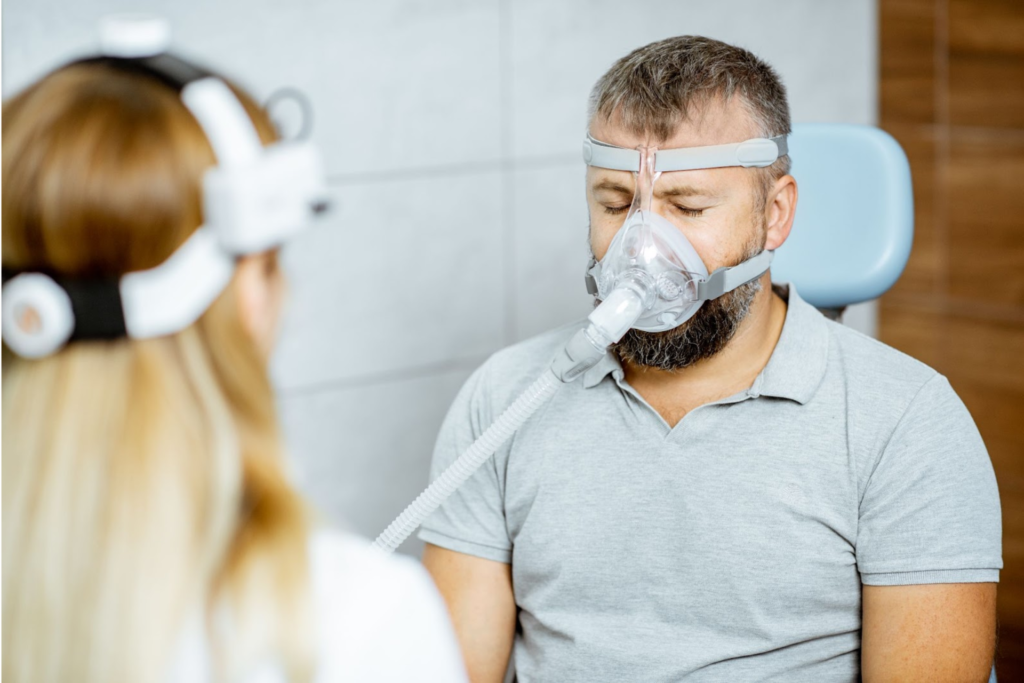We’ve all experienced drowsy driving at least once in the past. You’re behind the wheel of your car, and you begin to feel a familiar sleepiness creep in. Maybe it happens while you’re driving at night, first thing in the morning, or even during the day. Perhaps you’re making a long road trip, or maybe you’re just driving to work or the grocery store. Either way, you’re struggling to keep your eyes open when you should be keeping your eyes on the road.
This is a familiar feeling for anyone who has ever driven while drowsy. Thankfully, you can avoid drowsy driving altogether by taking safe driving precautions and getting tested and treated for undiagnosed sleep disorders. For professional drivers and commuters, sleep apnea is a major contributing factor to drowsy driving. It can make even a short car ride potentially life-threatening if you fall asleep at the wheel.
How do you know when your drowsy driving is caused by something more than the Sandman working overtime? What are the dangers of drowsy driving, especially if you drive for a living? How do you prevent drowsy driving?
Let’s put this matter to sleep once and for all.
What is Drowsy Driving?
Drowsy driving occurs whenever you operate a motor vehicle while you are sleepy. That’s all there is to it. It can happen to even the best and most attentive drivers.
Unfortunately, drowsy driving is an all too common occurrence on the roads. One poll found that 60 percent of adults reported driving while drowsy during the last year! Even worse, one in every 25 adults has fallen asleep behind the wheel in the past month!
Of course, this is a major safety hazard to not only yourself but everyone on the roads.
The Dangers of Drowsy Driving
An episode of Mythbusters once examined the myth that driving tired was more dangerous than drunk driving. After running some tests, they confirmed that the myth is actually true. Driving drowsy and driver fatigue are major causes of motor vehicle accidents and collisions, possibly even more so than driving under the influence.
The risk of getting into an accident increases dramatically when you are drowsy. Sleep deprivation causes mental impairment comparable to driving under the influence of alcohol. In fact, 24 hours of sleep deprivation can cause impaired driving similar to a blood alcohol content (BAC) of .10 percent— where your reaction time decreases and your speech slurs.
This can make you less attentive to your surroundings or more easily distracted. You can also enter microsleep, periods where you doze off for just a few seconds. It may not seem like a lot, but a lot can happen in a few moments.
In 2017, sleepiness behind the wheel caused at least 91,000 crashes, resulting in about 50,000 injuries and 800 deaths. Building on this, researchers estimate that approximately 21 percent of fatal crashes involve a drowsy driver. [1]
Drowsy driving is even more dangerous when the weather’s acting up. Rainy or icy conditions are major culprits of traffic accidents. While it may not snow much here in Tennessee, we do get a lot of rain. Whether you’re drowsy or not, you should always exercise extra caution while driving during bad weather.
However, a sleepless night isn’t the only factor that can create drowsy drivers.
Related: Sleep Deprivation and Its Effects on The Brain
Untreated Sleep Disorders: The Driving Force of Automobile Accidents
Approximately 70 million Americans have one or more sleep disorders. This can create a lot of opportunities for potential car crashes.
Sleep disorders— including insomnia, sleep apnea, or circadian rhythm abnormalities— restrict and interrupt your sleep, which means that your sleep is less restorative. You need 7-9 hours of restorative sleep each night to be able to function well, both physically and mentally.
Healthy sleep maintains your brain health and reaction time and keeps you sharp and alert for whatever life throws at you.
Untreated sleep disorders can cause excessive daytime sleepiness or tiredness during the day, even if you get a whole night’s sleep. This can cause impaired or distracted driving, reduce reaction time, and increase your risk of fatal crashes.
Untreated sleep disorders can be hazardous if operating motor vehicles is part of your livelihood. Regarding the transportation industry and sleep disorders, one condition causes more problems for these drivers than all others.
And if you’ve been reading our blog for a while, you probably know where this is going.
Related: Why We Sleep (And Why It’s So Important to Sleep Well)
Asleep at the Wheel: How Obstructive Sleep Apnea Impacts Professional Drivers
Obstructive sleep apnea (OSA) is the most prevalent and often undiagnosed sleep disorder currently impacting the transportation industry, specifically commercial drivers like long-haul truck drivers.
Obstructive sleep apnea is a serious sleep disorder where you stop breathing several times at night. Depending on the severity of your sleep apnea, you may experience over 30 breathing interruptions per hour!
Anywhere between 26 to 36 percent of commercial drivers on the road have OSA. However, only 5 to 15 percent receive effective treatment to ensure safe driving practices. [2]
Truck drivers aren’t the only ones facing the risks of drowsy driving; your local Uber drivers are at risk too.
Rideshare Drivers and Sleep Disorders
Drivers working for rideshare companies like Uber and Lyft may not drive as long or as far as commercial truck drivers, but they still often drive at times that can impact their sleep schedule.
Most rideshare drivers do their work on the side, after their regular work hours, or during their “off” hours. As a result, they’re often driving at night or spending an extended amount of time awake each day. Of course, this can also increase the risk of drowsy driving crashes and accidents caused by low visibility. [3]
Unfortunately, fatigue and sleepiness are inherent safety risks in the transportation industry. These risks will always be present, even with the proper treatment and precautions, but diagnosing and properly treating drivers with sleep disorders is necessary to create safe roads for all drivers.
How Employers Are Addressing Drowsy Driving and Sleep Apnea
Some employers have adopted fatigue management programs to address these potential safety issues. For example, some ridesharing companies require a 6-hour rest period after each 12 or 14-hour shift. However, the American Academy of Sleep Medicine believes this is insufficient because these drivers are already working extended hours and tend to drive during times when sleepiness and fatigue peak.
Instead, they recommend addressing the risks of fatigue and sleepiness in the ridesharing industry, providing education and resources to drivers to prevent drowsiness, and encouraging government agencies to mitigate the risks by limiting service hours. These regulations are already in place for other transportation industries, but testing drivers for sleep disorders is critical if we want to minimize drowsy driving.
In fact, some trucking companies are doing this already.
One such company, Schneider National, requires all of their new truck drivers to be tested for sleep apnea— and their employee health program covers CPAP machines and supplies to treat sleep disorders if employees have them.
Some companies are also implementing fatigue management technologies in their fleets. These systems help monitor drivers for signs of fatigue and impaired driving. If a driver is showing signs of drowsy driving, the tech alerts them so that these drivers can take a much-needed rest break.
These steps can go a long way in protecting drivers and other motorists. Proper treatment for sleep disorders like obstructive sleep apnea in the transportation industry can:
- Decrease accident rates
- Reduce company healthcare costs
- Improve employee quality of life
- Decrease turnover at work
Remember— fatigue affects all drivers, whether they drive for a living or just to get around. No matter which of these you are, there are solid steps you can take to prevent driver drowsiness and motor vehicle crashes.
How You Can Prevent Drowsy Driving
Whether you’re driving to work or across the country, there are steps you can take to minimize your risk of a drowsy driving accident. Here are five of our tips to help you drive safely and attentively.
1. Get Tested for Sleep Disorders
Sleep disorders make it harder for you to get the restorative sleep you need to function properly and drive safely. To make matters worse, it can be challenging to know if you have a sleep disorder. If you think you might have a sleep disorder or have struggled to stay awake on the road, it’s imperative to get tested.
A sleep study will monitor your brain and muscle activity and your breathing while you sleep to check for abnormalities. Once it’s clear what the issue is, you can receive the treatment you need to get the sleep you deserve.
If you’re not getting the restorative sleep you need but aren’t sure if you have an undiagnosed sleep disorder, here are a few symptoms to keep an eye out for:
- Feeling exhausted the next day, even after a whole night’s sleep
- Taking 30 minutes or more to fall asleep
- Waking up at least once during the night
- Loud snoring, gasping or choking during sleep
If you or a loved one experience any of these symptoms, that’s a sign to schedule a sleep study— pronto!
2. Get Enough Sleep
This may be easier said than done for some people, but this is one of the most important ways to prevent drowsy driving.
Most adults need 7-9 hours of good quality sleep each night. Here are a few ways that you can help yourself get a good night’s sleep every night:
- Go to bed at the same time every night, and wake up at the same time each morning. Establishing this routine helps your body get used to your sleep schedule so that when it’s time to go to sleep or wake up, your body is ready. This also helps you maintain a healthy and consistent circadian rhythm.
- Avoid blue light before bed. Blue light from electronic devices like smartphones, televisions, and computers can hinder your body’s natural melatonin production, making it harder for you to fall asleep and stay asleep. Instead, avoid your devices 60 to 90 minutes before bed, or consider using blue light-blocking glasses or screen covers. We recommend using those from OccuShield or Swanwick.
- Practice relaxation techniques. Stress makes it hard for you to fall asleep— and stressing about falling asleep makes it even worse. Relaxation techniques like journaling, meditation, and positive visualization can help you de-stress and fall asleep more easily.
3. Take Breaks— Or Take Turns Driving
If you’re driving long distances, taking a break every 100 miles or 2 hours can go a long way in keeping you awake and alert behind the wheel.
During these breaks, take some time to get out of the car and stretch your legs. Use the bathroom if you need to, or take this time to get a snack or a beverage to keep your energy up.
If you’re traveling with a coworker, friend, or family member, you can also take turns driving every few hours. Switching off whenever the current driver gets tired will allow them to rest as you continue making your way to your destination.
Driving with a passenger— and chatting with them— can also help you stay engaged while behind the wheel.
3. Avoid Medications That Cause Drowsiness
Certain medications can make you drowsy and wreak havoc on your ability to drive safely. If you’re preparing to drive long distances, avoid taking medications that can make you tired. Some of these include:
- Antihistamines, including Benadryl, Zyrtec, Unisom, and Claritin. Nighttime formulas of pain relievers like Tylenol contain the same active ingredient as these antihistamines— diphenhydramine— which can cause drowsiness.
- Antidepressants including trazodone, serotonin reuptake inhibitors (SSRIs) like citalopram, and serotonin-norepinephrine reuptake inhibitors (SNRIs) like Cymbalta.
- Benzodiazepines, including ativan, xanax, and valium.
Note: Always take prescribed medications as directed. Talk to your doctor if you need to reschedule your dosage or if there are any non-drowsy alternatives to your current prescription.
4. Stay Engaged While You Drive
Whether you’re in it for the long haul or just a few minutes, having something interesting in the background can help keep you bright-eyed and bushy-tailed while you’re behind the wheel.
If you’re riding with a passenger, a little conversation can go a long way in keeping you awake. Other things you can try include:
- Listening to upbeat or lively music on the radio
- Listen to podcasts
- Listen to an audiobook— these are especially helpful for long car rides and road trips
Don’t Let Poor Sleep Drive You Crazy
Everyone experiences poor sleep every so often, but a disturbingly high percentage of adults have driven while drowsy even just in the last month. Remember, a tired driver is a dangerous driver.
Drowsy driving is a significant safety risk whether you are driving a few miles or a thousand. It’s especially dangerous if you’re one of the millions of Americans who operate motor vehicles for a living. There are ways to prevent drowsy driving from endangering yourself and others on the road, and the first step is to get tested for sleep disorders.
Contact us at the Sleep Centers of Middle Tennessee today to schedule a consultation! We can help you regain the healthy sleep you need to fire on all cylinders and operate safely.
References
1. Watson, Nathaniel F, et al. “Confronting Drowsy Driving: The American Academy of Sleep Medicine Perspective.” Journal of Clinical Sleep Medicine : JCSM : Official Publication of the American Academy of Sleep Medicine, U.S. National Library of Medicine, pubmed.ncbi.nlm.nih.gov/26414989/.
2. Commendatore, Cristina. “Sleep Disorders Continue to Plague Professional Drivers.” FleetOwner, 5 July 2022, www.fleetowner.com/safety/article/21245743/sleep-disorders-continue-to-plague-professional-truck-drivers.
3. Berneking, Michael, et al. “The Risk of Fatigue and Sleepiness in the Ridesharing Industry: An American Academy of Sleep Medicine Position Statement.” Journal of Clinical Sleep Medicine : JCSM : Official Publication of the American Academy of Sleep Medicine, American Academy of Sleep Medicine, 15 Apr. 2018, www.ncbi.nlm.nih.gov/pmc/articles/PMC5886447/.

